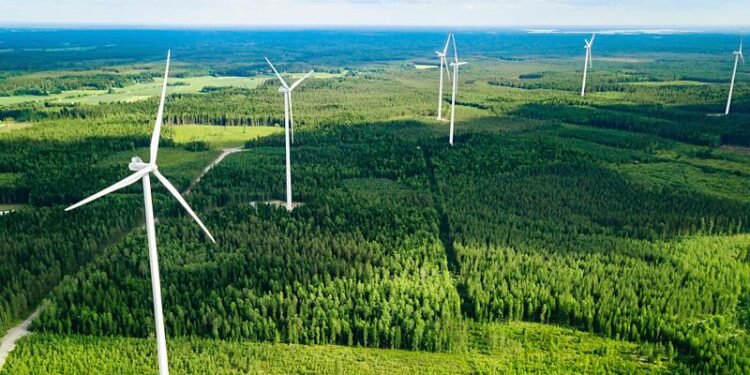Enefit Green and Sumitomo have officially abandoned plans for their ambitious offshore wind project in Estonia, marking a significant setback for the nation’s renewable energy ambitions. The decision to scrap the venture, announced this week, comes amid mounting challenges in project financing and shifting market conditions. This development raises questions about the future of offshore wind investments in the Baltic region and underscores the complexities facing green energy initiatives in emerging markets.
Enefit Green and Sumitomo Call Off Estonian Offshore Wind Venture
Enefit Green and Japan’s Sumitomo Corporation have decided to discontinue their collaborative initiative focused on developing offshore wind energy in Estonia. The joint venture, which aimed to capitalize on the region’s promising maritime wind resources, will no longer move forward due to a combination of regulatory challenges and shifting market conditions. Both companies emphasized that despite the project’s cancellation, their commitment to advancing renewable energy solutions remains strong, with ongoing investment directed towards alternative green projects.
Key factors influencing the decision included:
- Complex permitting processes that delayed timelines significantly
- Rising costs in offshore infrastructure development
- Uncertain policy environment affecting long-term project viability
Below is a summary of the strategic impacts this decision has on Enefit Green and Sumitomo’s renewable portfolios:
| Company | Impact | Next Steps |
|---|---|---|
| Enefit Green | Refocuses on Baltic onshore wind and solar projects | Accelerate domestic renewable pipeline |
| Sumitomo Corporation | Reevaluates offshore market entry strategy in Europe | Seek partnerships in alternative regions |
Industry Implications of the Project Cancellation for Baltic Renewables
The abrupt termination of the offshore wind initiative by Enefit Green and Sumitomo signals a significant recalibration within the Baltic renewable energy sector. This cancellation not only marks a pause in Estonia’s ambitions to expand its offshore wind capacity but also raises concerns about the viability of large-scale green projects in the region amid rising costs and uncertain regulatory environments. Industry players are now prompted to reassess investment strategies, balancing the eagerness for sustainable growth with the heightened risks of geopolitical pressures and supply chain disruptions.
Key consequences reverberating through the market include:
- Investor confidence has been shaken, demanding clearer policy frameworks to mitigate perceived uncertainties.
- Supply chain actors reliant on offshore wind development face reduced demand, potentially impacting employment and innovation.
- Regional collaboration efforts may shift focus toward more cost-effective or onshore alternatives to maintain momentum in green energy transitions.
| Factor | Impact on Baltic Renewables |
|---|---|
| Capital Allocation | Reallocation toward less risky green projects |
| Regulatory Environment | Calls for enhanced government support and clarity |
| Technology Deployment | Acceleration of onshore wind and solar PV applications |
| Market Sentiment | Increased caution among stakeholders and financiers |
Strategic Recommendations for Future Offshore Wind Investments in Estonia
Given the recent decision by Enefit Green and Sumitomo to discontinue their offshore wind project in Estonia, stakeholders must pivot towards more resilient strategies that can safeguard future investments. Prioritizing enhanced risk assessment frameworks, including thorough evaluation of regulatory, environmental, and market factors, will be crucial. It is equally important to foster stronger partnerships between public authorities and private entities, ensuring streamlined permitting processes and incentivized financial models that reduce project uncertainty.
Investors and developers should also consider diversifying their portfolios with a focus on modular and scalable offshore wind technologies. Embracing innovation in turbine design and grid integration can lower overall costs and improve project viability. The following list highlights strategic priorities for future projects:
- Robust policy alignment: Engage early with regulators to align timelines and expectations.
- Local content development: Boost local supply chains to create economic incentives.
- Flexible financing structures: Incorporate public-private funding mechanisms with risk-sharing.
- Advanced environmental assessments: Utilize cutting-edge data to minimize ecological impact.
| Factor | Recommended Approach | Expected Benefit |
|---|---|---|
| Regulatory Stability | Long-term policy frameworks | Reduced approval delays |
| Technology Innovation | Invest in R&D and modular turbines | Lower capital expenditure |
| Financial Models | Hybrid public-private partnerships | Risk mitigation and better returns |
Final Thoughts
The cancellation of the Estonian offshore wind project by Enefit Green and Sumitomo marks a significant setback for the region’s renewable energy ambitions. Both companies have cited strategic reassessments and shifting market conditions as key factors behind the decision. As the offshore wind sector continues to evolve rapidly, industry watchers will be closely monitoring how this move impacts future investments and the broader push toward sustainable energy in the Baltics.
















